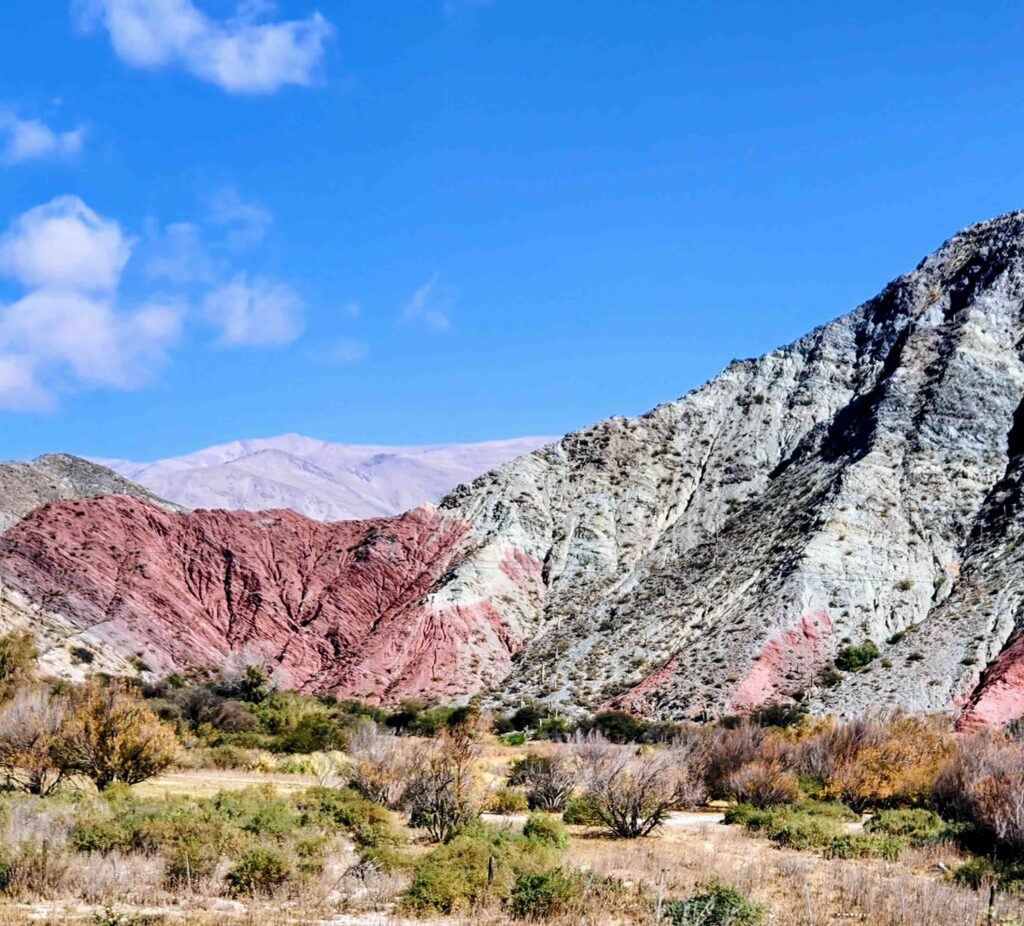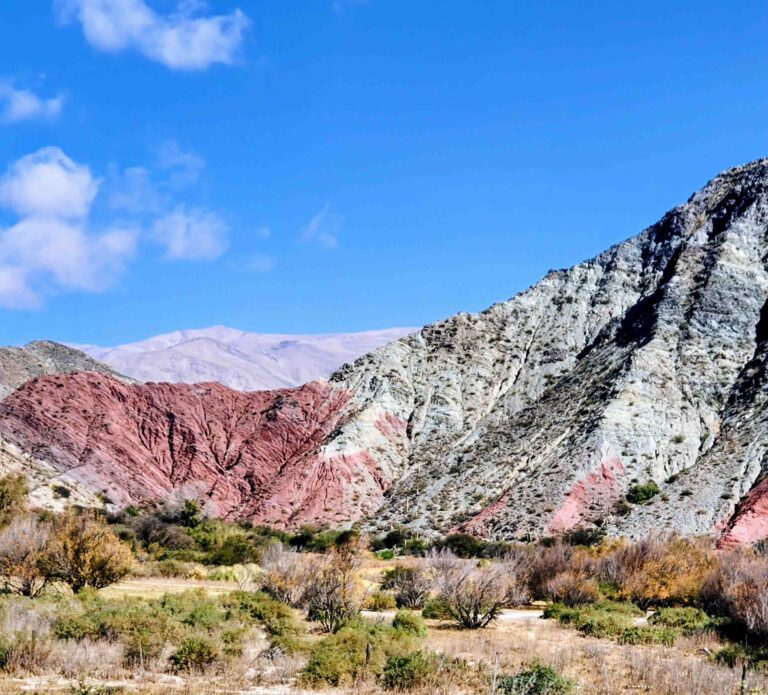Drive to Iruya, Salta
The thermometer in the car read around 5 degrees Celsius as we set out a little after 10 am. It was a clear day, and the mountains to the north were luminous in the rising sun as we drove north about 45 kilometers past Humahuaca and turned onto a dirt road for the rest of the trip to Iruya, another 50k, which took another hour and 40 minutes. We had read about this fantastic route, despite the roads, but we were underwhelmed for a good while — just a simple, dirt road cutting through sheep pastures and every 10 kilometers or so, a tiny town would appear. The most interesting thing was that every pueblo had a beautiful cemetery with flowers and a well-kept stone fence, and each seemed to be much larger than we would expect for the size of the towns.
Finally, after about an hour we started climbing on switchbacks up to about 4000 meters (13,000+ft), passing through the Abra del Condor with spectacular views of pink, green, and purple mountains with clouds hanging in between them and the wide, rocky fields of yellow grass and paths below us. Harrowing would be my descriptor of the route, but then I’m a bit afraid of heights (?!). We passed a sign informing us we had crossed from Jujuy to Salta and then with dozens of acres of farmland in the distance below, we headed down more switchbacks to about 2500m (8000ft) — a drop of 1500m (5000ft) –and then back up more winding roads along the canyon and up to Iruya, a village of maybe a 1000 people built into the cliffs at 2800 meters altitude and above the river. Along the way we encountered several mules loose on the side of the road who stopped to say hello, and several interesting and amusing signs and sites, including the shrine of the “Immaculate Virgin de Buenos Caminos” (Immaculate Virgin of Good Roads) where all the road equipment for repairing the roads was parked. And we ran into an extreme cycling tour group, coasting down the switchbacks on what we presumed to be electric bikes.
Driving through the town of Iruya is impossible because of the narrow streets, so we were directed to park in the riverbed below the town and walk up. In 6-degree crisp, cold weather, we hiked up to the church and then another kilometer to the top of the town and had a small lunch at the Iruya Hotel.
The return trip was just as hairy, but much quicker by at least 45 minutes probably due to Knox’s familiarity with the roads; we had more fantastic views coming the other way with the setting sun lighting up the mountains to the east. Without question, this road trip was one of the longest, most challenging dirt roads we have encountered ever, and worth every second!
Link to Photos: https://photos.app.goo.gl/FbNdNTon2bUjWT8T6
Drive to Iruya, Salta Read More »


